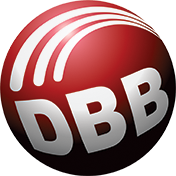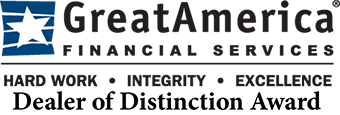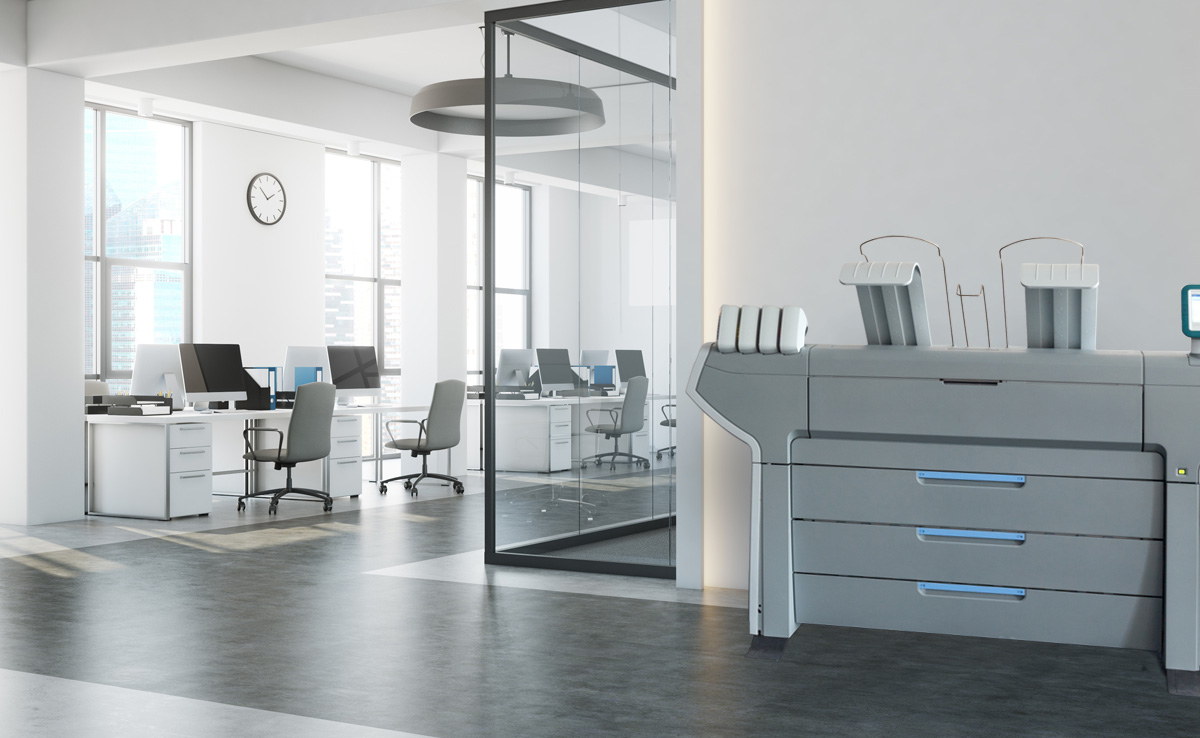Businesses rely on printers and copiers to keep their office productive. While standard sized Multifunction Devices (MFDs) are great for regular office printing, whenever the company requires a print larger than the standard A4 or A3 sizes, it’s common to outsource the job to a commercial printer. While this made sense in the past, it’s no longer necessary for organizations to outsource wide format prints as they can keep all printing jobs in-house with the right device.
Six Reasons Why Your Organization Needs a Wide Format Printer
Topics: #SecureYourBusiness, #CustomerServiceExcellence, #MoreThanPrint, #MoreThanCopiers, #ManagedPrintServices, #IntelligentBusinessInformationServers
Achieve Sustainability with Managed Print Services
In today’s age of social and environmental awareness, every organization knows how far a reputation for sustainable practices can go in the modern economy. The public expects today’s companies to make every practicable effort to reduce their impact on the environment. Yet, sustainability in business goes way beyond merely sourcing eco-friendly supplies and technologies. It requires a concerted effort to streamline the practices and processes in the company towards a business that can grow effortlessly into the future while reducing wasteful activities in the company’s daily operations.
Topics: #SecureYourBusiness, #CustomerServiceExcellence, #MoreThanPrint, #MoreThanCopiers, #ManagedPrintServices, #IntelligentBusinessInformationServers
How Managed Print Services Can Save Your Law Firm Money
Probably more than any other industry, the legal profession still relies on massive amounts of documents flowing in and out of the office every day. The accurate composition, filing, distribution, and retrieval of documents is a primary concern for law firms as any deficiency in the process can lead to losses in revenue. Due to the sensitive nature of the information law firms’ process, they also require elevated data security controls to protect from the uncontrolled disclosure or dissemination of Personal Private Information (PPI).
Topics: #SecureYourBusiness, #CustomerServiceExcellence, #MoreThanPrint, #MoreThanCopiers, #ManagedPrintServices, #IntelligentBusinessInformationServers
If you want to improve workflow in a production print environment, in-line operations should be first on your list for research. By automating these operations in workflows you will reduce total production time; thereby, shortening turn times and reducing labor costs as opposed to off-line manual operations.
Most production systems come standard with some capabilities to automate operations and offer an assortment of options to fit more specialized applications. You will typically find the ability to print on standard tab extensions and insert them as divider pages in manuals. Pre-cut blank tab sets come in a wide array of tab sizes to fit your needs and are available pre-collated to run through production devices. When you combine this with in-line punching capabilities you can produce book blocks ready for final binding. A simple way to improve workflows is with job presets which are typically found in standard print drivers and optional controllers. Presets will save set up time and cut misprint waste by storing the appropriate settings for a print job and then applying them to other jobs with the same requirements.
The real powerhouse workflow improvements are found in optional equipment and the operations they perform. The following are some examples of in-line options and how they can be used to improve your workflows.
If you need to produce saddle style booklets or simple fold in half sheets, you should consider a booklet finisher rather than a simple flat sheet staple finisher. Most manufactures offer a finisher like this for production devices and may also work with aftermarket providers for finishers with greater capabilities. If you choose this type of finisher consider the following.
• How many sheets will it staple
• What paper weights will it handle
• What paper sizes will it handle
• What options are available
Options may be available to trim the open side (known as the face) of the booklet or the top, bottom, and face (known as three side trim). Extended conveyors to allow easier gathering of finished product and options to square the spine to mimic a perfect bound book may also be available on some devices.
To improve GBC binding workflows, many production devices are compatible with a GBC stream punch to provide in-line punching with changeable dies to match the binding system(s) that you use. Complete book blocks can be produced that are ready for one of the five styles of GBC binding or insertion into three ring binders.
Folding units provide common styles of folding without the manual handling, time, and labor involved in folding offline. Typically you will find the ability to produce letter folds in and out, half folds, double parallel, gate and z folds ready to use directly from the device.
Interposers provide the ability to insert covers or sheets into the finished product post engine, thereby avoiding the imaging counter, rollers and plates in the paper path, and imaging processes. Covers and inserts are often produced by other methods and may bring properties with them that cause issues when ran through the engine. There are many reasons why you may want to utilize this option and the following are the most common.
• Avoid hand collating covers and/or special sheets into the product
• Utilize downstream features like punching for covers and/or special sheets
• Prevent damage to engine from covers containing metallic images or special coatings
• Avoid the click charge that happens with each sheet through the engine
• Prevent damage to the cover or sheet from the fusing process
Stacker units facilitate wheeled carts to make completed flat sheet products easy to move and eliminate the manual offloading of finished products from the device. For long runs a second stacker can be utilized to keep production rolling while the first unit is emptied and prepared with another empty cart.
Optional print controllers, like models from Fiery and Creo, offer diverse workflow tools to pre-flight jobs and optimize run time by capitalizing on pre-ripped files being queued for production or moved between devices. These controllers also enhance print-on-demand capabilities by having the file ready to run again with minimal setup or file ripping.
Whether you add options or use the embedded capabilities of a production device you can dramatically cut cost, waste, and turn times while producing better products from improved workflows in your organization.
Topics: Production Print, Process Improvement, Ricoh, #CustomerServiceExcellence, #MoreThanPrint, #MoreThanCopiers, #ManagedPrintServices, sustainability, improve profits, Workflows





